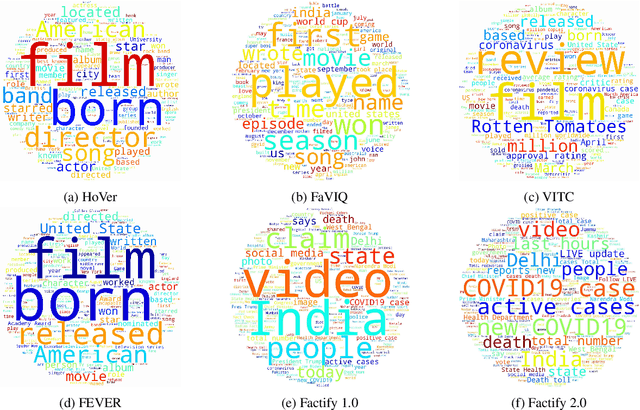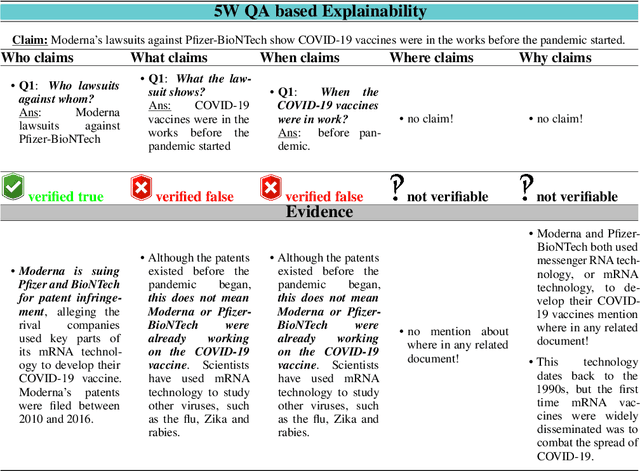Megha Chakraborty
Counter Turing Test CT^2: AI-Generated Text Detection is Not as Easy as You May Think -- Introducing AI Detectability Index
Oct 24, 2023Abstract:With the rise of prolific ChatGPT, the risk and consequences of AI-generated text has increased alarmingly. To address the inevitable question of ownership attribution for AI-generated artifacts, the US Copyright Office released a statement stating that 'If a work's traditional elements of authorship were produced by a machine, the work lacks human authorship and the Office will not register it'. Furthermore, both the US and the EU governments have recently drafted their initial proposals regarding the regulatory framework for AI. Given this cynosural spotlight on generative AI, AI-generated text detection (AGTD) has emerged as a topic that has already received immediate attention in research, with some initial methods having been proposed, soon followed by emergence of techniques to bypass detection. This paper introduces the Counter Turing Test (CT^2), a benchmark consisting of techniques aiming to offer a comprehensive evaluation of the robustness of existing AGTD techniques. Our empirical findings unequivocally highlight the fragility of the proposed AGTD methods under scrutiny. Amidst the extensive deliberations on policy-making for regulating AI development, it is of utmost importance to assess the detectability of content generated by LLMs. Thus, to establish a quantifiable spectrum facilitating the evaluation and ranking of LLMs according to their detectability levels, we propose the AI Detectability Index (ADI). We conduct a thorough examination of 15 contemporary LLMs, empirically demonstrating that larger LLMs tend to have a higher ADI, indicating they are less detectable compared to smaller LLMs. We firmly believe that ADI holds significant value as a tool for the wider NLP community, with the potential to serve as a rubric in AI-related policy-making.
Overview of Memotion 3: Sentiment and Emotion Analysis of Codemixed Hinglish Memes
Sep 12, 2023Abstract:Analyzing memes on the internet has emerged as a crucial endeavor due to the impact this multi-modal form of content wields in shaping online discourse. Memes have become a powerful tool for expressing emotions and sentiments, possibly even spreading hate and misinformation, through humor and sarcasm. In this paper, we present the overview of the Memotion 3 shared task, as part of the DeFactify 2 workshop at AAAI-23. The task released an annotated dataset of Hindi-English code-mixed memes based on their Sentiment (Task A), Emotion (Task B), and Emotion intensity (Task C). Each of these is defined as an individual task and the participants are ranked separately for each task. Over 50 teams registered for the shared task and 5 made final submissions to the test set of the Memotion 3 dataset. CLIP, BERT modifications, ViT etc. were the most popular models among the participants along with approaches such as Student-Teacher model, Fusion, and Ensembling. The best final F1 score for Task A is 34.41, Task B is 79.77 and Task C is 59.82.
Findings of Factify 2: Multimodal Fake News Detection
Jul 19, 2023Abstract:With social media usage growing exponentially in the past few years, fake news has also become extremely prevalent. The detrimental impact of fake news emphasizes the need for research focused on automating the detection of false information and verifying its accuracy. In this work, we present the outcome of the Factify 2 shared task, which provides a multi-modal fact verification and satire news dataset, as part of the DeFactify 2 workshop at AAAI'23. The data calls for a comparison based approach to the task by pairing social media claims with supporting documents, with both text and image, divided into 5 classes based on multi-modal relations. In the second iteration of this task we had over 60 participants and 9 final test-set submissions. The best performances came from the use of DeBERTa for text and Swinv2 and CLIP for image. The highest F1 score averaged for all five classes was 81.82%.
IMAGINATOR: Pre-Trained Image+Text Joint Embeddings using Word-Level Grounding of Images
May 12, 2023Abstract:Word embeddings, i.e., semantically meaningful vector representation of words, are largely influenced by the distributional hypothesis "You shall know a word by the company it keeps" (Harris, 1954), whereas modern prediction-based neural network embeddings rely on design choices and hyperparameter optimization. Word embeddings like Word2Vec, GloVe etc. well capture the contextuality and real-world analogies but contemporary convolution-based image embeddings such as VGGNet, AlexNet, etc. do not capture contextual knowledge. The popular king-queen analogy does not hold true for most commonly used vision embeddings. In this paper, we introduce a pre-trained joint embedding (JE), named IMAGINATOR, trained on 21K distinct image objects level from 1M image+text pairs. JE is a way to encode multimodal data into a vector space where the text modality serves as the ground-ing key, which the complementary modality (in this case, the image) is anchored with. IMAGINATOR encapsulates three individual representations: (i) object-object co-location, (ii) word-object co-location, and (iii) word-object correlation. These three ways capture complementary aspects of the two modalities which are further combined to obtain the final JEs. Generated JEs are intrinsically evaluated to assess how well they capture the contextuality and real-world analogies. We also evaluate pre-trained IMAGINATOR JEs on three downstream tasks: (i) image captioning, (ii) Image2Tweet, and (iii) text-based image retrieval. IMAGINATOR establishes a new standard on the aforementioned down-stream tasks by outperforming the current SoTA on all the selected tasks. IMAGINATOR will be made publicly available. The codes are available at https://github.com/varunakk/IMAGINATOR
FACTIFY-5WQA: 5W Aspect-based Fact Verification through Question Answering
May 07, 2023



Abstract:Automatic fact verification has received significant attention recently. Contemporary automatic fact-checking systems focus on estimating truthfulness using numerical scores which are not human-interpretable. A human fact-checker generally follows several logical steps to verify a verisimilitude claim and conclude whether it is truthful or a mere masquerade. Popular fact-checking websites follow a common structure for fact categorization such as half true, half false, false, pants on fire, etc. Therefore, it is necessary to have an aspect-based (which part is true and which part is false) explainable system that can assist human fact-checkers in asking relevant questions related to a fact, which can then be validated separately to reach a final verdict. In this paper, we propose a 5W framework (who, what, when, where, and why) for question-answer-based fact explainability. To that end, we have gathered a semi-automatically generated dataset called FACTIFY-5WQA, which consists of 395, 019 facts along with relevant 5W QAs underscoring our major contribution to this paper. A semantic role labeling system has been utilized to locate 5Ws, which generates QA pairs for claims using a masked language model. Finally, we report a baseline QA system to automatically locate those answers from evidence documents, which can be served as the baseline for future research in this field. Lastly, we propose a robust fact verification system that takes paraphrased claims and automatically validates them. The dataset and the baseline model are available at https://github.com/ankuranii/acl-5W-QA.
Factify 2: A Multimodal Fake News and Satire News Dataset
Apr 08, 2023Abstract:The internet gives the world an open platform to express their views and share their stories. While this is very valuable, it makes fake news one of our society's most pressing problems. Manual fact checking process is time consuming, which makes it challenging to disprove misleading assertions before they cause significant harm. This is he driving interest in automatic fact or claim verification. Some of the existing datasets aim to support development of automating fact-checking techniques, however, most of them are text based. Multi-modal fact verification has received relatively scant attention. In this paper, we provide a multi-modal fact-checking dataset called FACTIFY 2, improving Factify 1 by using new data sources and adding satire articles. Factify 2 has 50,000 new data instances. Similar to FACTIFY 1.0, we have three broad categories - support, no-evidence, and refute, with sub-categories based on the entailment of visual and textual data. We also provide a BERT and Vison Transformer based baseline, which acheives 65% F1 score in the test set. The baseline codes and the dataset will be made available at https://github.com/surya1701/Factify-2.0.
Memotion 3: Dataset on Sentiment and Emotion Analysis of Codemixed Hindi-English Memes
Mar 23, 2023Abstract:Memes are the new-age conveyance mechanism for humor on social media sites. Memes often include an image and some text. Memes can be used to promote disinformation or hatred, thus it is crucial to investigate in details. We introduce Memotion 3, a new dataset with 10,000 annotated memes. Unlike other prevalent datasets in the domain, including prior iterations of Memotion, Memotion 3 introduces Hindi-English Codemixed memes while prior works in the area were limited to only the English memes. We describe the Memotion task, the data collection and the dataset creation methodologies. We also provide a baseline for the task. The baseline code and dataset will be made available at https://github.com/Shreyashm16/Memotion-3.0
 Add to Chrome
Add to Chrome Add to Firefox
Add to Firefox Add to Edge
Add to Edge